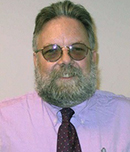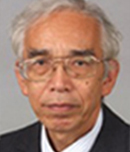Day 2 :

Biography:
Dr. Polt began his research career by developing methods for amino acid synthesis in Prof. Marty O’Donnell’s lab at IUPUI. After that he was trained in the art of Organic Synthesis in the laboratories of Profs. Gilbert J. Stork at Columbia University and Dieter Seebach at the ETH in Zürich. He has continued to develop novel synthetic methods for amino acids, amino alcohols, glycosides and glycopeptides. Application of these methods has resulted in the production of a number of pharmacologically active glycopeptides, alkaloid-like inhibitors of glycolipid processing enzymes and glycosyltransferases, as well as glycolipids with biological activity such as glycosphingolipids and rhamnolipids. He discovered a new class of glycosphingolipids in the insect Manduca sexta— biologically active sphingomyelins and glycosides derived from dienylsphingosine, and has developed methods for their synthesis, as well as the synthesis of rhamnolipids from Pseudomonas aeruginosa. The biological focus of his work has been in attempting to understand the chemistry of carbohydrates (e.g. glycolipids, glycoproteins) at cell membranes, membrane trafficking, and using these insights to design glycopeptide drugs from peptide neurotransmitter (neuromodulators, hormones) with enhanced stability in vivo that are capable of penetrating the Blood-Brain Barrier and interacting with GPCRs as agonists or antagonists. Clinical applications include pain, migraine, Parkinsons, Alzheimers and other neurogenerative diseases. In addition to lecturing and laboratory teaching during 25 years at the University of Arizona, and the publication of more than 125 scientific papers, he has mentored a large number of undergraduate, graduate (16 Ph.D.s granted, 3 in progress) and post-doctoral students who have taken positions in academia, industry and the US government. His Ph.D.s have hailed from the US (9), Czech Republic*, China, India, Iran*, Ireland, Kenya*, Korea, Mexico* and Sri Lanka. Four of these Ph.D. students (*) have gone on to become naturalized citizens or permanent resident status. Recent undergraduates associated with his research group have gone to graduate schools at Harvard, MIT, Boston University, University of Wisconsin, and Columbia University.
Abstract:
Parkinson's disease (PD) is the 2nd most common neurodegenerative disorder, affecting over 1 million people in the US. Parkinson’s disease causes difficulties with movements such as walking, writing, and speaking that occur because of deficiencies of the chemical dopamine in the brain. Current therapies for PD only treat the symptoms and do not reverse underlying disease processes that cause dopamine-producing brain cells to die. This situation has led to widespread interest in new strategies of neuroprotection or neurorestoration. The most promising approaches to modifying the disease process in the laboratory have relied on natural brain chemicals known as “growth factors.” Several growth factors have demonstrated the ability to reverse the disease process in animal models of PD. A few of these growth factors have shown sufficient promise that they have been tested in clinical trials in humans with PD. One promising approach is offered by the peptide “secretins” vasoactive intestinal peptide (VIP) and pituitary adenylate cyclase-activating polypeptide (PACAP) which play important roles in neuronal survival, neuroprotection, inflammation and immunomodulation. PACAP seems to be protective against the loss of dopamine-producing brain cells in rodent model of Parkinson’s, but only after being injected directly into the brain. The proposed glycopeptides are surfactants, chemically speaking, and have extended half-lives in vivo, and unlike their peptide counterparts, these molecules can efficiently cross the blood-brain barrier (BBB).
We have developed a new technology platform to develop glycopeptide analogues that show increased stability, that maintains. We will synthesize a series of novel glycopeptides based on PACAP and VIP to screen their efficacy at PAC1, VPAC1 and VPAC2 receptors expressed in CHO reporter cells, and test the most promising compounds in animal models of Parkinson’s disease. We will be assisted greatly in this endeavor by microdialysis data that will allow us to quantify brain levels of the drug over time, and direct measurements of drug stability in vivo. This is accomplished by multiple collision-induced fragmentation mass spectroscopy (MSn). In this way we hope to produce one or more drug candidates for further study, ultimately leading to clinical application.
Keynote Forum
Jetze J. Tepe
Michigan State University
USA
Keynote: The use of small molecule proteasome modulation in human diseases
Time : TBD

Biography:
Prof. Tepe recieved his PhD from the University of Virginia in 1998 with Prof. T.L. Macdonald and completed his post-doctoral studies with Prof. R.M. Williams at Colorado State University in 2000. Research in his lab is primarily focused on the synthesis and use of natural products and their analogues to interrogate proteasome-mediated signaling pathways. Using the new synthetic methods, drug-like derivatives of natural products are prepared and interrogated for their clinical significance in vitro, cell culture and animal models. For his academic drug discovery efforts aimed at multiple myeloma, he received the American Cancer Research Scholar award, Senior Award from the Multiple Myeloma Research Foundation in 2008, and Multiple Myeloma senior award in 2010, and the International Myeloma Senior Award in 2013.
Abstract:
Natural products isolated from plant, animal or fermentation has long been the main source for compounds used in the chemotherapeutic intervention of cancer. However, in the later part of the 20th century, the advances of combinatorial chemistry have taken center stage in the drug discovery process and natural product synthesis took a temporary backseat for these new chemical processes. Combinatorial techniques and compound repurposing have resulted into large libraries in a very cost-efficient manner that can be screened for their biological activities against a desired target. Although cost-effective, these libraries suffer from a lack of diversity with respect to the structural complexity, stereochemistry and chemical space. In addition, the enforcement of restrictions of structural complexity and “drugability rules”, further narrows the chemical space and thus limits the discovery of novel drug-target interactions.
Research in the Tepe lab is primarily focused on the synthesis and use of natural products and natural product mimics to discover new drug-targets interactions. As part of this effort, the Tepe lab has developed a range of new heterocyclic reactions structurally inspired by complex marine sponge metabolites. Target identification of these natural product mimics revealed several unprecedented drug-target interactions, including mechanistically unique proteasome inhibitors and activators. Here we will present our journey toward the discovery of small molecules capable of inducing novel drug-target interactions with a specific focus on the small molecule regulation of proteasome activity.
Keynote Forum
Christopher Hulme
The University of Arizona
United States
Keynote: First-in-class MCRs coupled with cascade reactions for the generation of molecular complexity
Time : TBD

Biography:
Professor Hulme has extensive experience of each phase of the drug discovery value chain having had functional responsibility for > 55 individual targets over a 20 year period and built two compound collections spanning both private and public sectors. He obtained his PhD at age 25 under the tutelage of Professor Jack Baldwin at Oxford University. He moved to the University of Arizona in 2007, after holding senior management positions at Sanofi-Aventis (’94-’99), Amgen (’99-2004) and Eli Lilly (2004-2007) establishing and running High-throughput Medicinal Chemistry groups. In 2010, he was the founder of BIO5 Drug Discovery after being the recipient of a $7.5 million grant from the NIH. In 2011, he was named the University of Arizona Innovator of the Year. He has over 185 papers, patents, abstracts and book chapters to his name with current research interests including targets for Alzheimer’s, prostate and colon cancer, and multi-component reaction/methodology development for file enhancement.
Abstract:
The discovery of complexity-generating multicomponent reactions (MCRs) is of continued interest to generate chemotypes of potential pharmacological value. This talk describes recent findings over the last 3 years primarily employing MCRs and subsequent post-condensation modifications. Valuable new insights into indole chemistry will also be presented coupled with intriguing MCR-cascade reactions. The operational simplicity and heterocyclic moieties contained in highlighted scaffolds make these protocols attractive for file enhancement, exploration of ‘drug-like’ chemical space, and medicinal chemistry campaigns
Keynote Forum
Mitsuji Yamashita
Shizuoka University
Japan
Keynote: Innovative and Strategic Materials for Medical Technology against Tumors: Preclinical Researches on Sugar Dendritic Gd-DTPA Complex MRI Contrast Agents and IER5/Cdc25B Targeted Novel Phospha Sugar Antitumor Agents
Time : TBD

Biography:
Mitsuji Yamashita was born in 1944 and has completed his PhD in 1972 from Nagoya University, Japan, and postdoctoral studies from Toyota Science and Chemistry Research Center, Japan, and Iowa State University, USA. He was a visiting professor of University of Massachusetts at Amherst, USA, and a visiting researcher of Oxford University, UK, in 1994. He started his studies on phospha sugars in 1973 and promoted to be a professor of Shizuoka University, Japan, in 1996 and retired at the age of 65 years to be a professor emeritus of Shizuoka University, Japan. His research field is now focused on medicinal materials based on chemistry of carbohydrates and phosphorus compounds to develop phospha sugar antitumor agents and sugar dendritic Gd-DTPA MRI contrast agents so as to be clinical use for innovating in cancer therapy. He has published more than 180 papers and patents as well as four books.
Abstract:
Novel and high sensitive sugar dendritic Gd-DTPA complexes for tumor diagnosis and novel multiple type and wide spectral antitumor agents of low-molecular-weight phospha sugar derivatives which target IER5/Cdc25B to innovate in chemo-therapeutic treatments against various type of cancer cells were investigated.


Sugar dendritic Gd-DTPA complex DEN-OH (as shown schematically by Fig. 1) was prepared. The in vivo evaluation of DEN-OH for MRI contrast agent showed quite clear images of blood vessels as well as very early stage of cancer (Fig. 2).

Phospha sugars (Fig. 3) having a phosphorus moiety in the hemiacetal ring of the Harworth equation of sugars were prepared from phosphorus heterocycles by new synthetic methods to construct the compound library. And their preclinical evaluations and mechanistic investigations were carried out.

Branched deoxybromo-phospha sugar derivatives such as DBMPP and TBMPP (Fig. 3) were found to exert novel, potential, and wide spectral antitumor activities by MTT in vitro evaluation method. The characterization and mechanism elucidation of these phospha sugar derivatives by flow cytometry and Western blotting showed that DBMPP and/or TBMPP enhanced the expression of cancer suppressors and suppressed the expression of cancer accelerators. TBMPP showed very high antitumor activity against blood cancer cells (K562, U937, etc.) as well as solid cancer cells and the IC50 value against various kind of leukemia cells were almost the same values. TBMPP enhanced the expression of IER5 and then suppressed the expression of Cdc25B, which is the common and essential factor to act at the mitosis stage of tumor cell cycles. Therefore, phospha sugar derivatives might induce apoptosis at G2/M stage and inhibit the proliferation of various kinds of cancer cells (or stem cells of leukemia might be attacked by phospha sugars). In vivo evaluation for TBMPP against K562 cells transplanted to a nude mouse implied successful cure of cancer (Fig. 4). Based on the preclinical research and computer aided drug designing we are expecting that phospha sugars may be developed to be clinically useful novel and innovative antitumor agents
Keynote Forum
Nicolas Moitessier
McGill University
Canada
Keynote: Computer-aided design, efficient synthesis and mechanistic studies of serine protease covalent inhibitors
Time : TBD

Biography:
Nicolas Moitessier is an Associate Professor at McGill University, Montréal, Canada. He received his undergraduate training and his Ph.D from Université Henri Poincaré-Nancy I (France) under the guidance of Dr. Yves Chapleur within the Groupe SUCRES. He carried out thesis research on computer-aided design and synthesis of carbohydrate-based biologically relevant molecules. He was first involved in the design and preparation of IP3 and Adenophostin A mimics using Sharpless asymmetric dihydroxylation as a key reaction. In collaboration with a theoretical chemistry group (headed by Dr. Maigret), he then focused on the computer-aided design and synthesis of carbohydrate-based antagonists of integrins. In 1998, he moved to Montréal where he joined Prof. Stephen Hanessian group. His interests involved the docking study and the asymmetric synthesis of conformationally constrained MMP inhibitors. He was also involved in a project related to the preparation of aminoglycosides as antibiotics and in the design and preparation of BACE-1 inhibitors. In 2001, he moved back to Nancy to start an academic career (Chargé de Recherche, CNRS) then back to Montréal in 2003 (Assistant Professor, McGill University). In 2009, He was promoted to Associate Professor. His current research interests integrate computational chemistry and organic/medicinal chemistry, spanning from software development to sugar chemistry and synthetic methodology. Among his achievements are the development of directing-protecting groups for regioselective carbohydrate functionalization, the development of a fully integrated computer-aided drug design platform (Forecaster) and computational catalyst/biocatalyst platform (Virtual Chemist), the development of novel methodologies for the synthesis of chiral cyclic and bicyclic scaffolds, the design, synthesis and evaluation of potential drugs with a focus on Alzheimer's disease and cancer. Current computational efforts include the development of a novel molecular mechanics method, the development of tools for reactive metabolite predictions, for drug-drug interaction and covalent drug binding. In the wet lab, students and post doctoral fellows are developing asymmetric catalysts, biocatalysts, anti-cancer therapeutics and transient directing protecting groups. In 2008, he received the first Reginald Fessenden Professorship in innovation for the development of the Forecaster platform in drug discovery. In 2009, he was awarded the AstraZeneca Award in Chemistry. In 2010, he co-founded Molecular Forecaster, a company distributing the developed software and providing service and consulting to local and international pharmaceutical and biotechnology companies. Nicolas is co-author of 70 publications, 2 registered copyrights, and co-inventor of 2 patents and 4 reports of invention.
Abstract:
Covalent serine peptidase inhibitors. Prolyl oligopeptidase, DPP-IV and fibroblast activation protein α are serine exo- and endopeptidases from the S9 family which are targets for cancer, Alzheimer’s disease and diabetes type II therapeutics. These 3 enzymes have been inhibited using covalent inhibitors. Our approach combined software development (covalent docking), synthesis, biochemistry and biophysical approaches to develop novel active inhibitors and develop methods for mechanistic studies of covalent inhibition. This integrated approach led to the discovery of a number of novel potent chemical series, novel synthetic methodologies and a better understanding of the covalent inhibition
Keynote Forum
Norihito Kawashita
Osaka University
Japan
Keynote: Fragment molecular orbital method based interaction analysis between cell adhesion factor FimH and mannose derivatives
Time : TBD

Biography:
Norihito Kawashita has completed his Ph.D on 2005 from Osaka University and then he moved to Research Institute for Microbial Diseases, Osaka University. He has been assistant professor of Graduate School of Pharmaceutical Sciences, Osaka University since 2007. His research topics are antiviral drug design and development, prediction of drug resistance, analysis of protein-protein interaction by quantum chemical calculation and analysis of organic reaction mechanism by computational chemistry.
Abstract:
FimH is a critical role for cell-cell adhesion of adherent-invasive Escherichia coli (AIEC) and uropathogenic Escherichia coli (UPEC) by the interaction with mannose in their host cell. Hence, a number of mannose derivatives are reported for inhibiting the interaction, and they become drug candidates for these infections [1, 2]. To find notable information for structure optimization, we calculated inter-fragment interaction energy (IFIE) of their complexes by fragment molecular orbital (FMO) method [3] and analyzed the strength of a correlation by compared with the experimental data. If the correlation is fine in the system, IFIE is a major parameter of the modification to develop more potent inhibitor.
In our study, twelve crystal structures of the FimH and mannose derivatives were used for FMO calculation. The complexes for calculation were prepared by MOE (CCG Inc.). One of the crystal water was included in the complexes. ABINIT-MP6.0+ software, MP2 levels, and 6-31g (d) basis set were used for FMO calculation. Then we considered with the correlation between IFIE and the enthalpy change of ligands [1].
From the result of the calculations, correlation between IFIE of twelve complexes and their enthalpy change ΔH was moderate (R=0.51). However, when we removed three outliers, the coefficient R was improved 0.90. It was excellent correlation between IFIE and the enthalpy changes. The results suggested that IFIE is available for the prediction of ΔH in these systems.
This work is a part of Construction of platform of FMO-based drug discovery using HPCI system and this research used computational resources of the K computer provided by the RIKEN Advanced Institute for Computational Science through the HPCI System Research project (Project ID: hp150160).
- Drug Design and Chemistry: Cancer Studies
Session Introduction
Nicolas Moitessier
McGill University
Canada
Title: Fitted, an evolving docking programs addressing unmet medicinal chemistry needs

Biography:
Nicolas Moitessier is an Associate Professor at McGill University, Montréal, Canada. He received his undergraduate training and his PhD from Université Henri Poincaré-Nancy I (France) under the guidance of Dr. Yves Chapleur within the Groupe SUCRES. He carried out thesis research on computer-aided design and synthesis of carbohydrate-based biologically relevant molecules. He was first involved in the design and preparation of IP3 and Adenophostin A mimics using Sharpless asymmetric dihydroxylation as a key reaction. In collaboration with a theoretical chemistry group (headed by Dr. Maigret), he then focused on the computer-aided design and synthesis of carbohydrate-based antagonists of integrins.
Abstract:
Docking methods have been prominent in the discovery of novel drugs. Over the 15 years ago, we have been developing a docking program which has been modified to address unmet needs in medicinal chemistry. Initially, our applications of docking programs to integrin antagonists, BACE-1 inhibitors, and aminoglycosides binding to bacterial RNA revealed the limitations of available docking programs, which were essentially docking flexible ligands to rigid proteins. Over the following year, we developed our own program, Fitted, implementing algorithms for protein flexibility, displaceable water molecules, and ligand-based pharmacophore-oriented docking. Other medicinal chemistry projects motivated most of the concepts and implementation within an ever-evolving docking program. We will present examples of medicinal chemistry-driven implementations such as methods considering drug-zinc coordination and its effect on the pKa of surrounding residues, for HDAC inhibitor design, routines to identify reactive groups and form bonds with a given residue to enable the development of covalent prolyl oligopeptidase (POP) inhibitors, methods to compute transition states while docking for studying the metabolism of POP inhibitors by cytochrome P450 enzymes (CYPs) and others.
Jagroop Kaur
Guru Nanak Dev University
India
Title: Optimization of the indole–pyrimidine–chrysin hybrid as the lead molecule for anti-inflammtory drugs

Biography:
Jagroop Kaur graduated from BBK DAV College (for women), Amritsar with BSc in Medical Bioinformatics in 2009. After completing her MSc in Applied Chemistry (Pharmaceuticals) from Guru Nanak Dev University, Amritsar in May 2012, she started her PhD under the supervision of Prof. Palwinder Singh in the same University. Her research interests include medicinal chemistry, various characterization techniques, bio-evaluation of synthesized compounds and computer aided drug designing.
Abstract:
By using the multi-target-directed drug designing strategy, a highly promising anti-inflammatory agent capable to inhibit cyclooxygenase-2 (COX-2) and lipoxygenase (5-LOX) enzymes of arachidonic acid metabolic pathway is developed. The strategic design of the molecules; linking together indole, chrysin and barbituric acid (pharmacophores of different medicinal agents) through propanol and methine moieties, was based on the results of molecular docking and molecular dynamics studies. The title compound 1 exhibited IC50 1nM and 1.5nM for COX-2 and 5-LOX, respectively. The results of UV-VIS spectral studies and isothermal titration calorimetry experiments indicated appreciable interactions of the compound with these two cellular targets. Further, the in-vivo investigations on Swiss Albino mice using capsaicin induced paw lickings and dextran induced inflammation models showed that these compounds possess appreciable analgesic and anti-inflammatory activities. The details of all the experiments including those in support of mode of action of the compound with its cellular targets will be presented.
Sukhmeet Kaur
Guru Nanak Dev University
India
Title: Rational design, synthesis and working of a tri-ligating receptor: Removal of cyanide from cytochrome c oxidase

Biography:
Sukhmeet Kaur graduated from Guru Nanak Dev University, Amritsar with BSc (Hons Sch) in Chemistry in May 2010. After completing her MSc (Hons Sch) in Chemistry from Guru Nanak Dev University, Amritsar in May 2012, she started her PhD under the supervision of Prof. Palwinder Singh in the same university. Her research interests include synthesis, characterization and biological studies of bioactive molecules and use of computational chemistry in drug design process.
Abstract:
Cyanide, one of the most toxic anions, when exceeds its permissible level of 1.9 μM results in inhibition of mitochondrial electron transport chain (ETC), thus causes the blockage of cellular respiration. Although many methods for detecting cyanide anion have been proposed, only two cyanide receptors- hydroxocobalamin and nitrile/thiosulfate, have been practically applied as antidotes for cyanide poisoning. A compound containing syringaldehyde and oxindole was designed and synthesized. The structure of the compound was elucidated with the help of various 1D and 2D NMR experiments which confirmed the E-configuration at the olefinic groups of part A and part B, and Z-configuration at olefinic group of fragment C. The compound was evaluated for its ability to bind with cyanide using UV-vis spectroscopy. The enzyme immunoassay confirmed the capability of the compound to free cytochrome c oxidase (cellular target of cyanide) from cyanide by forming complex with CN-. The rationale for the design of the molecule, its synthesis, response to CN- and removal of cyanide from the aqueous medium as well as bonded to Cyt C will be presented.
- Drug Discovery and Drug Development: Emerging Diseases
Session Introduction
Carsten Detering
BioSolveIT Inc.,
USA
Title: A tale of a low molecular weight inhibitor for bruton’s tyrosine kinase, modeled in seesar, the world’s best compound ideation software for medicinal

Biography:
Carsten Detering obtained his PhD in Physical Chemistry from the Freie Universitaet Berlin in Germany in 2001. He did his Post Doc at the University of Washington in Seattle where he worked on the application of docking software for nucleic acid drug targets and rational design of new inhibitors for a malaria project. In 2005 he came to BioSolveIT in Germany as an Application Scientist first, later filling the position of Senior Key Account Manager and Executive VP of Sales, North America, before moving back to Seattle as CEO of BioSolveIT Inc, the North American subsidiary of BioSolveIT.
Abstract:
In this workshop, we will showcase the most important features to get you going with SeeSAR, the easy-to-use software for medical chemists. We will use an example published by Takeda, in which they described the discovery new inhibitor for Bruton’s Tyrosine Kinase, Btk, which is of lower weight than ibrutinib and also doesn’t bind covalently against the target. The workshop will walk you through analyzing the protein-ligand complex and the details of editing the ligand starting from the crystal structure until we arrive at the published structure. By means of the editing process, all important features of SeeSAR will be explained in great detail, so that participants will be able to start doing their own compound ideation after the workshop. A free license will be provided in succession of the workshop.

Biography:
Fabrice Gardebien has completed a PhD in Theoretical Chemistry from the University of Pierre and Marie Curie (Paris, France) and Postdoctoral studies from University of Mons (Mons, Belgium). He is interested in predicting protein-ligand interactions by combining molecular modeling techniques (molecular docking and molecular dynamics) and quantum chemistry (ab initio and semi-empirical levels). He is the Director of the DSIMB team based in Reunion Island.
Abstract:
Drepanocytosis is a genetic blood disorder characterized by red blood cells that assume an abnormal, rigid, sickle shape. In the pathogenesis of vaso-occlusive crises of sickle cell disease, red blood cells bind to the endothelium and promote vasoocclusion. At the surface of these sickle red blood cells, the over-expressed protein Lutheran strongly interacts with the protein Laminin found on the endothelium. The aim of this study is to identify a protein-protein interaction inhibitor with a high probability of binding to Lutheran for the inhibition of the Lutheran-Laminin interaction. A virtual screening was performed with 395 601 compounds that target Lutheran. Prior validation of a robust docking and scoring protocol was considered on the protein CD80 because this protein has a binding site with similar topological and physico-chemical characteristics; CD80 also has a series of ligands with known binding affinity constants. The protocol that was finally selected consisted of multiple filtering steps based on docked scores, molecular dynamics simulations, post-screening scores, and molecular properties. We were able to identify promising compounds that could reduce the Lutheran-Laminin interaction as measured by our microfluidic platform capable of quantifying cell rolling and binding/adhesion.
Ilknur Babahan
Adnan Menderes University
Turkey
Title: Synthesis of novel agents-effective on leukemia and colon cancer cell lines

Biography:
Ilknur Babahan received PhD degree in Organic Chemistry from Ege University, Izmir, Turkey. Since 2008, she has been a faculty member at Adnan Menderes University in Aydin, Turkey. Her main areas of research interest are organic synthesis, organometallic chemistry and medicinal chemistry. Her current research interests include design and synthesis of novel ligands and their metal complexes which may be used as “smart medicine” in cancer therapy.
Abstract:
For cancer development an alteration of multi-genetic and epigenetic molecular events is required. Therefore, it seems very difficult to prevent cancer using some compounds. Expectation from such compounds is to arrest or reverse carcinogenic changes before the appearance of malignancy. A great quantity of new techniques facilitates the fast and simultaneous screening of various novel compounds for their antitumor activities at molecular and biochemical levels. The structures of the compounds are important by exhibiting their anti-tumoral activity. It has been identified some structural requirements for the anti-tumoral activity. Based on literature knowledge thiosemicarbazones and their complexes can arrest the cell cycle and some of them are very effective when compared with known chemotherapeutic agents. At this point in our work, screening for activity of some novel compounds is very important for cancer therapy. Several research groups actively synthesize active compounds and carry out pharmacological studies. In this work, we present the synthesis and characterization of novel thiosemicarbazone derivatives and their Ni(II), Cu(II) and Co(II) complexes of these materials. All of the synthesized complexes were tested against two human cancer cell line (HL-60 and HT-29) for their anti-proliferative and apoptotic feature. These complexes were found to be potent anticancer agents with concentrations that inhibited 50% of proliferation (IpC50) between 5μM and 40μM. These results afford for a path further research on pharmacological studies on how can these ligands and their complexes can be used for developing some new drugs and how they affect the cell cycle.

Biography:
Ochieng Anthony studied pure and applied chemistry,, a PhD scholar and is currently a Senior Chemistry Lecturer at Faculty of Science,Sumait University in Tanzania .He is also a co-author of determinations of acidic pharmaceutical components in analgesic drugs using wet classical techniques. His current researches focuses on natural products and evaluating their medicinal values, pharmaceutical analysis, cosmetology, Macrocyclic compounds and their applications in drug targeting, and using statistical thermodynamics in evaluating physical constants. He is a member of Kenya Chemical society, American Chemical Society, GNDU & I Chemical Society, Royal Chemical Society, a Reviewer with Journal of chemical a material science and has over 15 years lecturing Chemistry in various higher academic institution and seven years working in managerial technical positions in pharmaceutical(Lab & Allied, Cosmos Pharm, Ranabaxy), Textiles(OCM) and cosmetics(Interconsumer Ltd) industrial sectors.
Abstract:
Aspirin, acetyl salicylic acid or 2-acetoxybenzoic acid has the carboxylic acid functional group hence easier to quantify using a strong alkali like NaOH. In most analgesic drug formulations in tablets, aspirin generally binds with other excipients or substituents which has acidic groups and easily reacts with NaOH, hence making sodium hydroxide not a suitable reagent for quantifying aspirin in analgesic tablet formulation. Six different tablets containing aspirin as active substance were taken. Methods using sodium hydroxide as the main reagent in quantification involves a lot of stoichiometric mathematical manipulations as in titrimetric, UV spectroscopy via multivariate calibration gave values at lower limit or outside the lower US & BP pharmacopeia limit while the hyphenated chromatographic techniques such as, GC-MS and HPLC gave a very good resolution and very precise results within the pharmacopeia limits.
- Chem-Virology (Zika Virus)
- Chemical Biology
Session Introduction
Shoujun Xu
University of Houston
USA
Title: Differential binding force: A new physicochemical parameter for drug design

Biography:
Shoujun Xu obtained his PhD in Chemistry from the Johns Hopkins University and received Post-doctoral training in Caltech and University of California at Berkeley. His expertise includes magnetic detection, spectroscopy and technology development. He invented the force-induced remnant magnetization spectroscopy (FIRMS) technique. Its high force resolution has enabled a wide range of applications in biochemical research. Multiple papers on prestigious scientific journals have been produced, and several patents have been either awarded or pending.
Abstract:
The optimization of drug structures has conventionally used the binding constant, which corresponds to the Gibbs free energy, as the physicochemical parameter to quantitatively measure the binding efficiency. Recent studies have questioned whether this is the best criterion; enthalpy instead has been considered an alternative parameter, supported by several drugdeveloping paths. However, it remains difficult to experimentally obtain enthalpy that is specific to the drug binding process because of the limitations of micro-calorimetry. We propose to use the differential binding force (DBF) as a new parameter to quantify the binding efficiency and stability of drug candidates. DBF is defined as the difference between the binding forces of ligand-receptor pairs with and without drug interactions. The binding forces are determined by force-induced remnant magnetization spectroscopy (FIRMS). The experimental scheme is that one of the ligand-receptor pairs is immobilized on the surface, while the other is labeled with magnetic beads. The magnetic signal is measured by an atomic magnetometer as a function of an external mechanical force. The binding force is given as the external force at which there is a decrease in the magnetic signal due to the dissociation of the ligand-receptor bonds. Because of the high force resolution and detection efficiency, DBF of drugs can be obtained more precisely than any other techniques. This method has been applied for various drug-DNA systems and revealed an unusual mutual selectivity between drug chirality and DNA sequence. Future applications and further technological development will be discussed.
- Chem-Toxicology, Chem-Microbiology, Chem-Genomics
